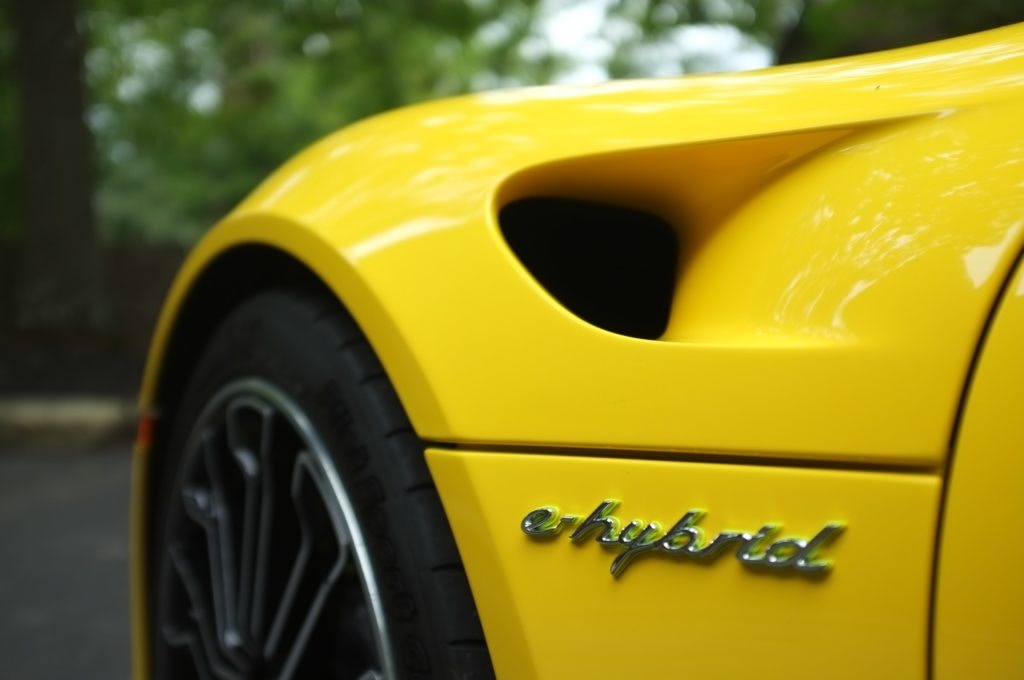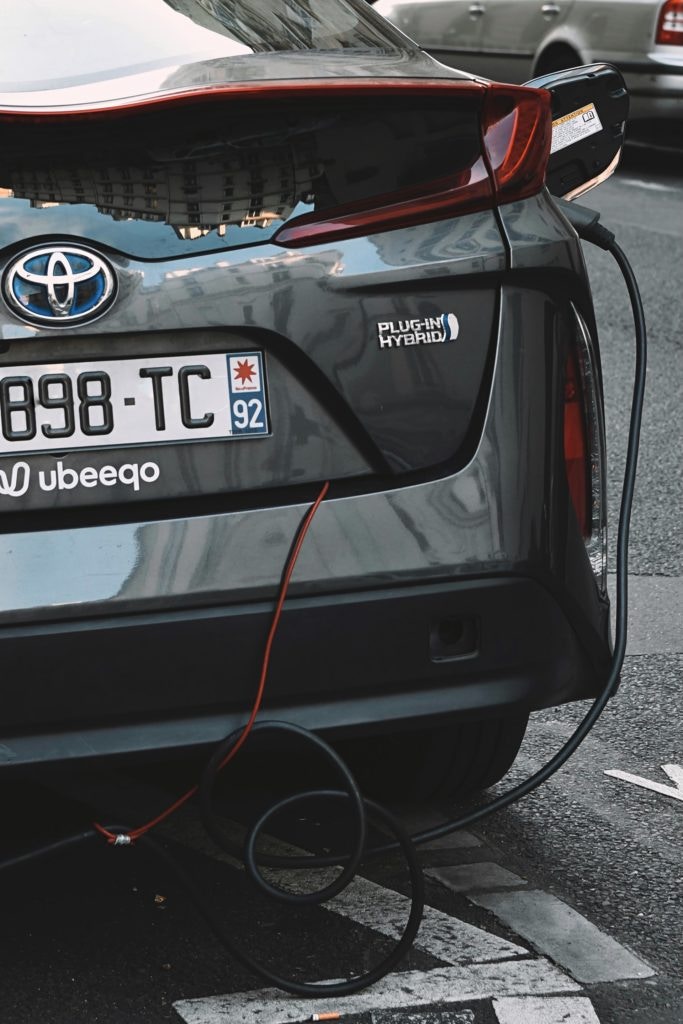What is a hybrid car & how does it work?

With the 2035 electric switchover on the horizon, electric cars are becoming more and more popular. However, if you aren’t ready to make that full-electric car leap yet, there are hybrid cars.
What does hybrid car mean?
A hybrid car uses both traditional fuel in the internal combustion engine (ICE) and electric power in its motor. There are a variety of hybrid types, each working in different ways.
Some hybrids blend the power of both energy sources to drive, some rely on petrol purely to power the electric batteries. Whatever the case, to be defined as ‘hybrid’, a car must use electric power alongside a standard gasoline engine.
Why get a hybrid car?
Using two fuel sources might sound like twice the effort when it comes to upkeep. If you’re selling your car and on the hunt for your next vehicle, there are plenty of reasons to consider a hybrid.
- Consume less fuel and have lower running costs
- Emit less CO2 and may be exempt from LEZ and ULEZ charges
- Pay less Benefit-In-Kind Tax on company cars
How do hybrid electric cars work?
Depending on their type, Hybrids work differently. As of 2024, the types of hybrid are:
- Full hybrid
- Mild hybrid
- Series hybrid
- Plug-in hybrid
The main difference between each of these is in their ‘drivetrain’ or ‘powertrain’. In simple terms, the drivetrain refers to the components that give power to the driving wheels. In hybrid vehicles, this power can come from an engine, or the batteries, and in some models, both.
Full hybrids
The most common type of hybrid car full hybrids are also known as ‘parallel hybrids’. They use a combustion engine and an electric motor to power the car. These energy sources can also be used together or independently.
For low-speed stop-start driving around town, they can rely purely on electricity. They have a regenerative braking system that produces electricity for the batteries each time you decelerate. The electric batteries aid with fuel economy. If the batteries run flat, the car can still drive using the ICE engine.
You can find parallel hybrid models from car brands such as:
- Toyota
- Nissan
- Honda
- Ford
- Kia
Mild hybrid cars
Mild hybrids use the same mix of gasoline engines and electric batteries, but the two cannot be used interchangeably. The engine kicks in when the batteries need it, not when you put your foot down as with a petrol or diesel car, which can be unnerving to a new driver. And like full hybrids, braking helps generate kinetic energy for the batteries.
Mild hybrid vehicles offer the cheapest way to own a car that uses electricity alongside a standard ICE engine. The following brands currently offer mild hybrid models:
- Suzuki
- Mercedes
- Audi
Series hybrid
In a series hybrid, there is usually no connection between the combustion engine and the wheels, meaning the powering of the car is purely down to the electric motor. Because the engine powers the electric batteries it extends their range, giving this model the title range-extender hybrid.
Great in stop-start driving, they are a popular choice for London taxis where reduced CO2 emissions result in exemptions from the ULEZ charge. On the other hand, it’s not the best option for performance driving as the combustion engine can’t assist as it would in a full hybrid.
Brands that currently have series hybrid models include:
- BMW
- Chevrolet
- LEVC
Plug-in hybrids
Plug-in hybrids, also called PHEVs, are models that can be manually plugged in to charge up the batteries. The closest option to a 100% electric vehicle, they can be driven purely using electricity, but also have a combustion engine.
Plug-in hybrids have much larger batteries that can cover more ground on electricity and use far less fuel than other models. However, those batteries add a lot of weight to the car, so if you ever have to rely on the engine alone to get you home, it higher fuel consumption.
Plug-in models are available from the following brands:
- BMW
- MINI
- Toyota
- Mitsubishi
- Porsche

Self-charging hybrid cars
Full hybrid, mild hybrid and series hybrid vehicles can all be considered self-charging as they don’t need to be plugged in to power up the batteries. Instead, the batteries are charged through regenerative braking or the engine.
How long do hybrid car batteries last?
As a general rule of thumb, hybrid batteries should be changed every 100,000 miles. Many hybrid vehicles also come with warranties of around 10 years so you’ll be covered for any faults in the batteries. For a regular household, it would take around 10 years to drive 100,000 miles.
What is range anxiety?
Range anxiety refers to the fear that an electric vehicle’s battery will run low before it reaches the destination or recharging point. It’s one of the reasons hybrids are a great gateway model for electric vehicles, as there are still traditional petrol engines to serve as backup.
Despite the explosion of charging points around the UK, the term is still commonly used on the topic of EVs. However, most electric cars are more than able to withstand the demands of a regular household and at a lower cost compared with traditional fuel.
Key components
Whichever model you choose, the basic components of a hybrid remain the same.
Auxiliary battery
This provides the power to start the car before the traction battery takes over and powers accessories.
DC/DC converter
This converts the high-voltage power from the traction battery to the lower-voltage power needed to charge the auxiliary battery.
Electric generator
This generates energy every time the car brakes.
Electric traction motor
This draws energy from the traction battery to turn the car’s wheels.
Exhaust system
A three-way catalyst reduces emissions as the exhaust system passes gases from the engine to the tailpipe.
Fuel tank
The tank for traditional fuel like petrol.
Internal combustion engine (ICE)
The standard engine found in any non-hybrid/electric car.
Traction battery
This stores electricity for the electric traction motor.
Transmission
This takes power from either the engine or the electric motor to drive the car.
How much is a hybrid car?
Hybrids are becoming increasingly more available. In 2024, the cheapest hybrid car you can get in the UK is the Fiat Panda Hybrid. You can purchase it for under £15,000. Prestige brands have also joined the fray — Porsche offer a hybrid model for a little over £100,000. The increasing popularity of environmentally-friendly cars means the second-hand market is growing too.
Will hybrid cars be banned in 2035?
The government’s plan to crack down on petrol and diesel cars in 2035 includes hybrid cars. This is because, while they’re not quite as bad as an ICE-only vehicle, they do still use an ICE engine, and that’s precisely what the ban targets.
So, should you sell your hybrid car in preparation for the big change? The answer is up to you — even after 2035 you’ll still be able to drive a hybrid you already own, or buy a second-hand one. The change will stop the manufacturing of any cars that run on petrol or diesel.
Of course, if you want to get ahead on selling your car and going electric, now could be a great time. Once the ban is in place, ICE will be undesirable which will be reflected in your car valuation and contribute to car depreciation.
Are they worth it?
So are hybrid cars good? In terms of environment, yes, at least compared to a classic ICE car. For other considerations like charge exemptions based on CO2 emissions, the answer is also yes, though this window of opportunity may be closing.
With the government limitations on ICE vehicles and hybrids coming in 2035, it may be wiser to make the full leap to 100% electric.

Frequently asked questions about hybrid cars
Do hybrid cars pay congestion charge?
Yes, hybrid cars have to pay Congestion Charge in London. Only battery electric (BEV) and hydrogen fuel cell vehicles qualify for exemption, and the exemption is due to be discontinued completely from December 25th 2025.
Are all hybrid cars automatic?
No, mild hybrids with manual transmission exist, but they are in the minority. Most hybrid models are automatic due to the careful balancing act of regenerative braking, dual-fuel use and general power. Hybrid and electric cars use clever technology to analyse and re-analyse this balance every second of your journey, and a manual transmission would be very disruptive.
Do you have to charge a hybrid car?
Plug-in hybrids can be charged by plugging them in, but they can also be charged through regenerative braking or the ICE. While most hybrid models can use the electric motor alone to drive or turn to the ICE when batteries are depleted, they are not designed to run on an empty gas tank.
What is a self-charging hybrid car?
‘Self-charging’ is the term used to differentiate between hybrid vehicles that don’t need to be plugged in to charge compared to those that do. Essentially, that means any model that isn’t a plug-in hybrid. The other models of hybrid use the ICE engine and braking to power the motor. As they don’t need any actual charging session, they can be considered self-charging.
Ready to sell your car?
Ready to learn more about valuing, maintaining, and selling your car? Check out more of our guides here, covering everything from hybrid and electric car depreciation to converting your car to dual-LPG fuel.
- Hybrid cars – should you buy or sell?
- What is a hydrogen fuel cell car?
- Electric cars — the ultimate guide
- Electric cars — should you buy or sell?
- LPG cars — the ultimate guide
- What documents do I need to sell a car?
- Do electric cars pay the congestion charge?
- How & where to charge your electric car at home and on the road
- How long does it take to charge an electric car?
- Do electric cars need servicing?
- Electric car FAQs
The information provided on this page is for general informational purposes only and should not be considered as professional advice.